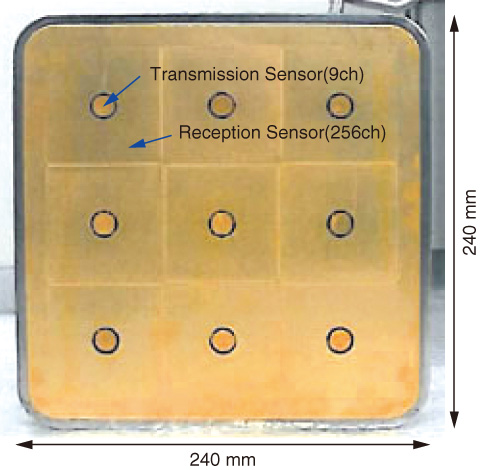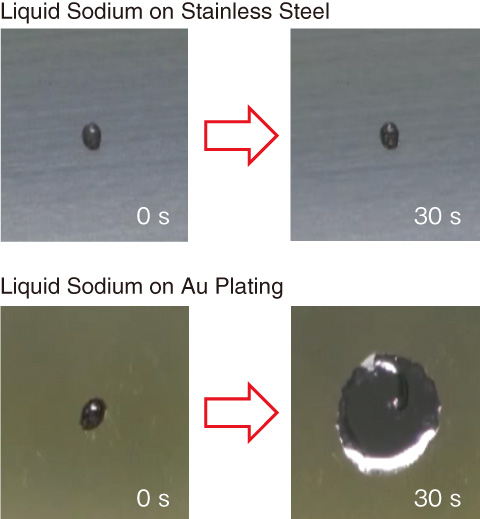
Fig.2-7 Surface of USV sensor

Fig.2-8 Improvement of sodium wetting by gilding processing
Liquid sodium, which is used in fast reactors, has many advantages as a coolant; however, it is difficult to optically observe the inside of the reactor vessel because of its opaqueness. Therefore, an under-sodium viewer (USV) was developed to inspect the structural integrity of the reactor vessel, and the improvement of the sodium wetting on the sensor surface is studied for practical use.
The USV transmits supersonic waves into liquid sodium and receives the reflection waves from the structures in the reactor. The structures are visualized by analyzing the period from transmission to reception of the supersonic waves, so it is important to improve the sensitivity to supersonic waves for practical use of the USV. Current knowledge suggests that the sensitivity to supersonic waves depends on the contact properties between sodium and the sensor surface, namely, sodium wetting. Therefore, we tried to improve the sodium wetting by gilding the sensor surface (Fig.2-7) and tested the sodium wetting under various plating conditions.
In the experiment, the test pieces were made under various plating conditions, using materials such as gold (Au), which was used in the present sensor; indium (In), which has a low melting temperature; palladium (Pd), which is a novel metal; and nickel (Ni), which is generally used as substrate plating.
As a result, the sodium wetting (spreading behavior) was found to be determined by the characteristics of the surface plating, particularly its solubility. Fig.2-8 shows the differences in the sodium wetting after gilding processing. The sodium droplet spreads on the Au plating but not on the stainless steel.
The difference is attributed to a more active dissolution reaction when the plating has a higher solubility. In this experiment, the sodium wetting was most substantially improved with Au plating; the reason is that the solubility of Au is 25mol%, which is higher than that of In, Pd, or Ni.
This study showed that gilding processing of the present USV sensor was an appropriate method to improve the sodium wetting. We plan to advance the research on sodium wetting, including theoretical considerations, focusing on the interfacial chemical reaction between sodium and the sensor surface and the effects of impurities in the sodium.